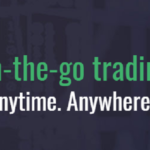If you’re looking to increase the success of your own e-commerce business, you know how close you’ve got to keep your ear to the ground. As an industry, e-commerce is constantly evolving. Best practices from years past — or even just a few short months ago — are so outdated today as to be completely useless or even harmful. This makes staying on top of the newest trends in the sphere of online shopping so important.
Savvy business owners know the importance of following emergent trends. It’s crucial to learn how to tell the good ones apart from the bad, to know which ones will be the new normal and which will just be a flash in the pan. Here’s what you need to know about the most prevalent online shopping trends of today and how following these trends can support the future of your own e-commerce business.
The Rise of Mobile-Centric Shopping Experiences
The mobile revolution is in full swing. Users spend just as much time accessing the internet with their mobile devices as they do with their laptops or desktops. There are at least four connected devices in the typical American household according to Pew Research, and that means savvy e-commerce businesses are embracing the prevalence of mobile shopping as the new normal.
Today, though, it’s not enough to have a “mobile-friendly” e-commerce site. Mobile-centric is the new trend, which involves building websites or apps with mobile devices in mind as the primary access device. Mobile-optimized browsing and, more importantly, checkout experiences are integral to keeping customers’ interest, and this trend is only going to strengthen in the future.
Increased Access to Centralized Discount Service Aggregators
With the number of e-commerce sites constantly growing, it can become a frustrating experience to find the best deal. Even shopping for a specific product can result in hours spent visiting one site after another to find the best price or the most attractive shipping options. The process can be exhausting and demoralizing.
That’s why the e-commerce industry has responded by centralizing price and product data through discount service websites. A site like Best Deals Today, for example, doesn’t sell directly but instead aggregates product prices across a wide variety of e-commerce platforms. Whether a product is for sale on Amazon or eBay or even through a brick-and-mortar retailer like Walmart, Target, or even Best Buy, Best Deals Today makes it easy to see the most impressive deals on a range of product types.
Reinforcing the Role of Social Media Influence on Sales
Inorganic marketing processes have been a part of e-commerce sales for a long time. Banner and text ads on websites and search engine results pages have, traditionally, been part of the marketing budget for any e-commerce business. However, e-commerce sites have been trending away from traditional online marketing efforts for some time. Social media influence, a much more organic approach to online marketing, has begun to claim an increasing market share instead.
How much of an increase? In 2014 alone, discovery of e-commerce products and services through social media rose by an astonishing 202 percent. This trend has, of course, continued, leading to social media influence being integral to any marketing plan. This means that e-commerce sites need to invest in targeted advertising efforts on platforms like Facebook to reach their chosen demographic or to partner with a social media influencer that will promote their site to a wide audience.
Embracing a Global Customer Base
The final trend that has emerged is one with literally far-reaching implications. As technology and infrastructure has continued to evolve across the globe, an increasing number of e-commerce sites have expanded their reach to include international customers. In fact, Nielsen found that 57 percent of online shoppers had made at least one purchase from an international source in 2015 alone.
In other words, expanding beyond the geopolitical borders of your e-commerce business provides you a major increase in prospective customers. Doing so does involve some preparation on your part, of course. International shipping and payment processing requirements will add a few layers of complexity to your e-commerce site, as will offering native language support for specific regions. However the increase in sales volume is likely to offset this by a wide margin.
The Future Is Emerging Now
The future of e-commerce is asserting itself while we speak. It’s taking the form of providing better mobile-centric shopping experiences and expanding your reach into international markets. It’s also appearing in harnessing the power of social media or simply making it easier for your customers to find the best deal on what they’re looking for. The march towards progress continues, and with it there will always be new and emergent trends that will help shape the state of e-commerce to come.








